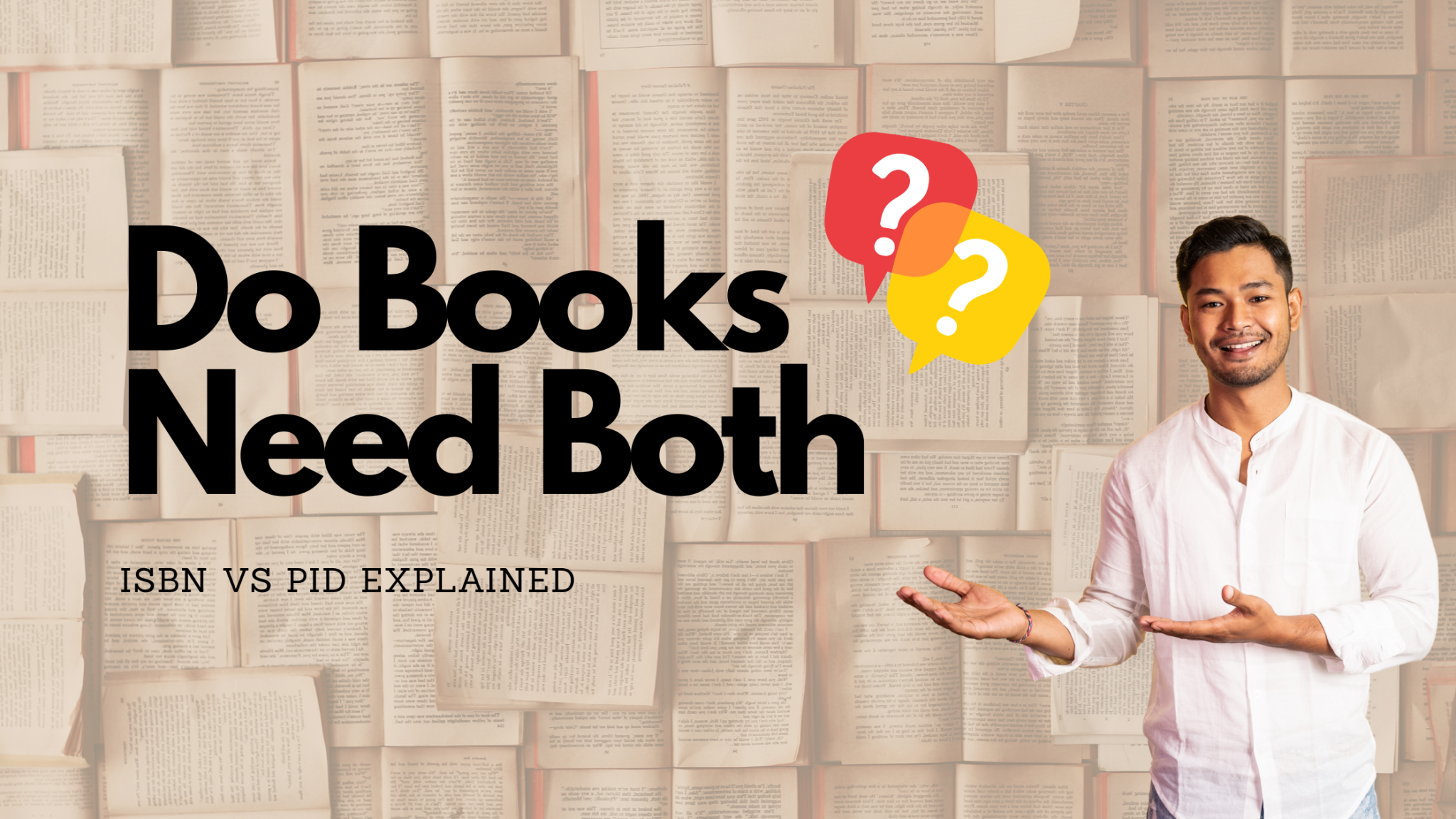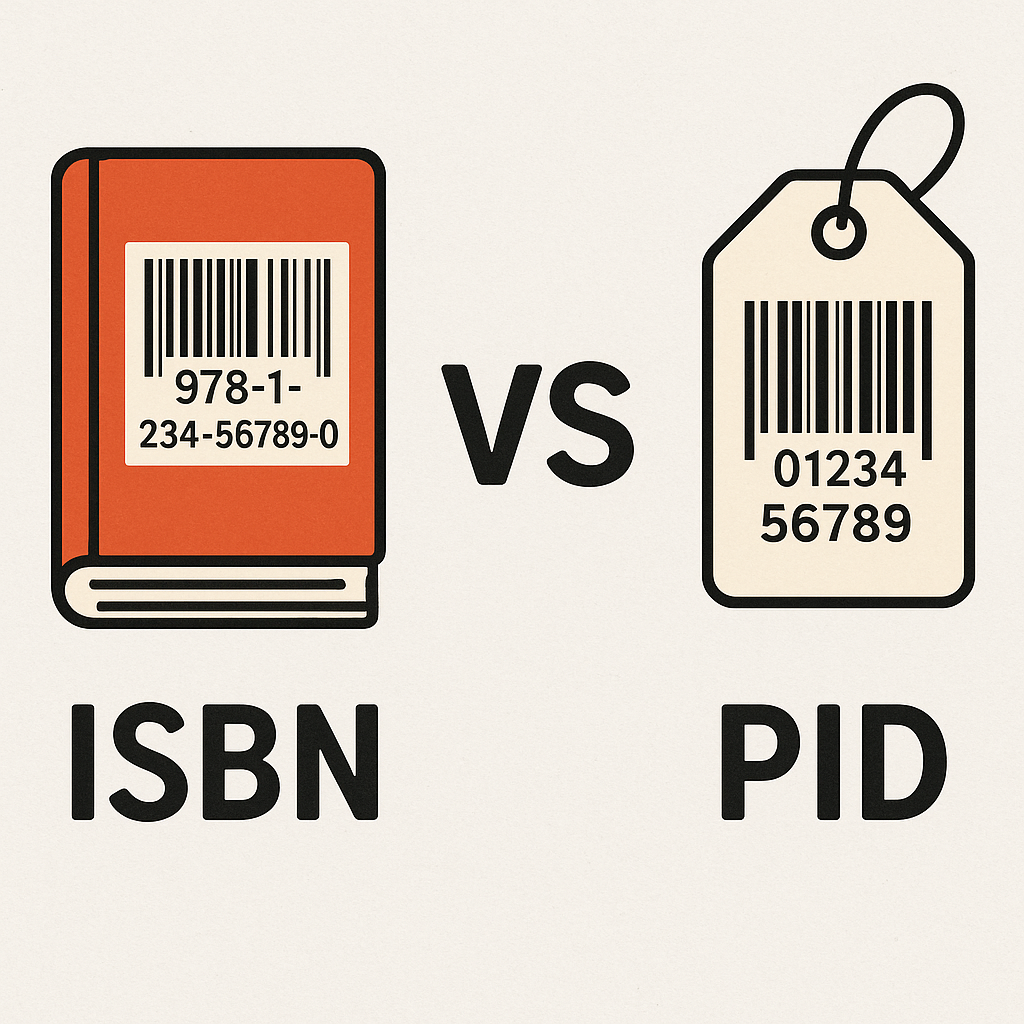
In the world of book publishing, tracking and identifying titles accurately is crucial for distribution, sales, and metadata management. Two terms that often appear in publishing discussions are ISBN and PID. While both serve as identifiers, they serve different purposes and are used in distinct contexts.
So, what exactly is the difference between an ISBN and a PID, and does your book need both?
Let us explore.
ISBN stands for International Standard Book Number. It’s a globally recognized 13-digit identifier that uniquely distinguishes books and similar publications.
Example:
A paperback version and a Kindle version of the same book should have two different ISBNs.
PID stands for Product Identifier or Publisher Identifier depending on the context. It’s a more general or internal identifier used by some publishers or digital platforms.
Unlike ISBNs, PIDs are not standardized or recognized across the global publishing industry. They’re useful within a specific system or platform but do not provide the same level of visibility or legitimacy as ISBNs.
|
Feature |
ISBN |
PID |
| Standardized? | Yes (internationally) | No (platform- or publisher-specific) |
| Purpose | Universal book identification | Internal or localized tracking |
| Used for Sales? | Yes (required by most retailers) | Not recognized for external retail sales |
| Who Assigns It? | ISBN agencies | Publishers or platforms |
| Visibility | Globally searchable | Limited to specific systems |

Here’s why:
But if you want maximum reach, professionalism, and cataloging, an ISBN is essential.
|
Scenario |
Use ISBN? |
Use PID? |
| Publishing on Amazon (Kindle & print) |
Optional* |
Yes (ASIN) |
| Publishing to multiple retailers |
Yes |
Optional |
| Internal document tracking |
No |
Yes |
| Library cataloging |
Yes |
No |
| In-house publishing platform |
Maybe |
Yes |
Amazon allows books to be published without an ISBN, but they will only be distributed through Amazon, not through broader retail or library networks.
Understanding the distinction between ISBNs and PIDs is crucial for authors and publishers because it directly affects how books are distributed, tracked, and discovered. ISBNs play a vital role in ensuring your book is properly cataloged in global databases, making it accessible to retailers, libraries, and readers across different platforms. PIDs, while more limited in scope, help publishers and distribution platforms manage their own inventory and internal systems efficiently. By knowing when and how to use each identifier, you can maintain accurate metadata, prevent duplication, and make strategic choices about where and how your book is sold. For self-published authors, this knowledge also supports greater control over publishing rights, branding, and visibility in a crowded marketplace.
ISBNs and PIDs serve different yet complementary roles in publishing. The ISBN acts as a universal identifier that enables global distribution and cataloging, while the PID helps with internal tracking or platform-specific management. Using both allows your book to be discoverable across sales channels and efficiently managed behind the scenes. Together, they ensure your publishing process is both professional and organized, one for the world to see, and one to keep things running smoothly.
As the publishing landscape continues to evolve, especially with the rise of digital platforms, it’s important to understand how different identifiers function. Relying solely on one system can limit your reach or cause confusion during distribution. By combining both ISBNs and PIDs appropriately, you position your book for greater success and easier management. It’s a small detail that can make a big difference in how your book is handled, discovered, and sold.
Yes, but only on certain platforms like Amazon. Without an ISBN, your book won’t be available in bookstores, libraries, or on many other platforms.
A PID is a general term; ASIN is Amazon’s specific identifier for products, including books. ASINs are a type of PID.
Typically, the publisher or the platform (like Amazon, Apple Books, or Smashwords) assigns the PID for tracking purposes.
Yes, your ebook needs a different ISBN. Each format (print, ePub, Kindle, PDF) should have a separate ISBN if it will be distributed widely.
ISBNs are purchased from the official ISBN agency in your country. In the US, that’s ISBn Services
Bottom Line:
